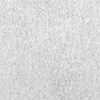Filter by
System of Measurement
Thickness
Performance
Clarity
Flexibility
Maximum Temperature
For Use With
Relative Friction Rating
Hardness
Hardness Rating
Comparable To
Dielectric Strength
Environment
DFARS Specialty Metals
Raw Materials
Fastening and Joining
Material Handling
Fluid Handling




































